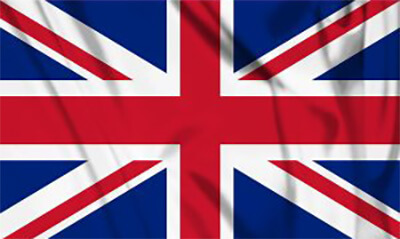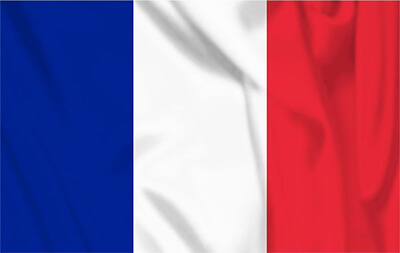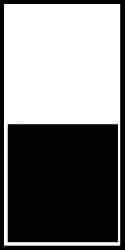| Page Created |
| October 4th, 2022 |
| Last Updated |
| May 24th, 2024 |
| Country |
  |
| Special Forces |
| Commando No. 10 Commando Special Boat Service |
| July 3rd, 1943 – September 4th, 1943 |
| Operation Forfar |
| Objectives |
- Make the Germans believe there is an upcoming invasion in the Pas the Calais area by special forces reconnaissance and the capturing Germans along that coast.
| Operational Area |
- Pas de Calais
- Normandy
- Somme
| Unit Force |
- Forfar Force and came mostly from No. 12 Commando. They are organised into four groups: Major Fynn, with four officers and thirty-nine other ranks known as Fynn Force. Captain 0. B. Rooney seven officers and sixty-two other ranks formed Rooney Force. Lieutenant Hollins with three officers and nineteen other ranks commanded Hollins Force. The fourth group, under command of Major Godfrey Franks consisting of twenty Frenchmen of the No. 10 (Inter-Allied) Commando is codenamed Frankforce. The group is trained at Dover during the last two weeks in September but is never used in the operation. Though No. 12 Commando provides most of the manpower, selected members of the Special Boat Service (SBS), and of X-Troop and the two French Troops of the No. 10 (Inter-Allied) Commando, also take part in some of the raids.
- Cockle Mk. 2 Canoe
- Motor Torpedo Boats
- Motor Torpedo Boat 250
- Dorys
- Converted Armstrong Whitworth Whitley
| Opposing Forces |
- Wehrmacht
| Operation |
Operation Forfar is part of Operation Starkey. An operation to simulate a British/Canadian invasion in the Pas de Calais area in order to draw the German Luftwaffe into an air battle.
Between thirteen and fourteen raiding operations are planned but only six to eight raiding operations are confirmed to have taken place. The confirmed operations are, Operation Forfar Easy, Operation Forfar Dog, Operation Forfar How, Operation Forfar Beer Operation Forfar Love and Operation Forfar Item. Some of these operations are aborted several times due to various circumstances.
The Forfar raids are more or less a failure. The objective of alerting the enemy to the presence of reconnaissance raids on the coastline is hardly met. The raiding neither manages to contact the Germans nor bring back prisoners. However, the last two Forfar operations, while not being totally successful, at least show the planners and those involved what could be achieved with luck and daring.
| Operation Forfar Easy I, July 3rd, 1943 – July 4th, 1944 |
Operation Forfar Easy I. Ten men party of No. 12 Command known as Hollins Force, led by Lieutenant Hollins, Motor Torpedo Boat. Their mission is a beach reconnaissance and prisoner-capture undertaking at Onival sur Mere in the Somme region in France.
The beach is reconnoitred but fail to make enemy contact and bring back some prisoners. They do bring back some barbed wire.
| Operation Forfar Beer I, July 5th, 1943 – July 6th, 1943 |
Operation Forfar Beer I. Ten men of No. 12 Commando and No. 1 French troop, No. 10 (Inter-Allied) Commando known as Fynn Force commanded by Major Fynn, Motor Torpedo Boat. Their mission is a beach reconnaissance and prisoner-capture undertaking at Eletot in the Seine-Maritime region of northern France.
The operation is cancelled after the Motor Torpedo Boat which is transporting the Commandos is discovered on its way to France by a German Armed Trawler.
| Operation Forfar Dog, July 5th, 1943 – July 6th, 1944 |
Operation Forfar Dog. Two officers and eight enlisted men of No. 12 Commando, Motor Torpedo Boat. Their mission is beach reconnaissance and prisoner-capture raid at Biville, east of Dieppe in France.
The raiding party lands unopposed and manages to scale the cliffs but have to retreat when they run into an impenetrable tangle of barbed wire at the top.
| Operation Forfar How I, July 5th, 1943 – July 6th, 1943 |
Operation Forfar How I. Ten men party of No. 12 Commando. Their mission is a reconnaissance at Quend Plage in the Somme region in France.
The mission is aborted due to the heavy surf.
| Operation Forfar Easy II, July 31st, 1943 – August 1st, 1943 |
Operation Forfar Easy II. Ten men party of No. 12 Command known as Hollins Force, led by Lieutenant Hollins, Motor Torpedo Boat. Their mission is a beach reconnaissance and prisoner-capture undertaking at Onival sur Mere in the Somme region in France.
Mission is Aborted
| Operation Forfar Beer II, July 31st, 1943 – August 1st, 1943 |
Operation Forfar Beer II. Ten men of No. 12 Commando and No. 1 French troop, No. 10 (Inter-Allied) Commando known as Fynn Force commanded by Major Fynn, Motor Torpedo Boat. Their mission is a beach reconnaissance and prisoner-capture undertaking at Eletot in the Seine-Maritime region of northern France.
Mission is aborted
| Operation Forfar How II, August 2nd, 1943 – August 3rd, 1943 |
Operation Forfar How II. Ten men party of No. 12 Commando. Their mission is a reconnaissance at Quend Plage in the Somme region in France.
Mission is aborted
| Operation Forfar Beer III, August 2nd, 1943 – August 4th, 1943 |
Operation Forfar Beer III. Ten men of No. 12 Commando and No. 1 French troop, No. 10 (Inter-Allied) Commando known as Fynn Force commanded by Major Fynn. Their mission is a beach reconnaissance at Eletot in the Seine-Maritime region of northern France.
The mission is aborted.
| Operation Forfar (Love), August 3rd, 1943 – August 4th, 1943 |
Operation Forfar (Love). Four men of the Special Boat Section, two Cockle Mk.2 Canoes. Their mission is capture German prisoners for interrogation and to reconnoitre the Dunkirk Pier, France.
The two teams of canoes are revealed by searchlights while approaching their target. They decide to retreat.
| Operation Forfar Item I, August 30th, 1943 – August 31st, 1943 |
Operation Forfar Item I. Eight men from No. 12 Commando,
No. 3 (X) troop, No. 10 Commando under command of Captain 0. B. Rooney also known as Rooney Force. Their Mission was capturing German prisoners and examinate a German searchlight emplacement in the Saint Valery en Caux area in Normandy, France.
Mission aborted
| Operation Forfar Item II, August 31st, 1943 – September 1st, 1943 |
Operation Forfar Item II. Eight men from No. 12 Commando,
No. 3 (X) troop, No. 10 Commando under command of Captain 0. B. Rooney also known as Rooney Force. Their Mission was capturing German prisoners and examinate a German searchlight emplacement in the Saint Valery en Caux area in Normandy, France.
Mission aborted
| Operation Forfar Item III, September 1st, 1943 – September 2nd, 1943 |
Operation Forfar Item III. Eight men from No. 12 Commando, No. 3 (X) troop, No. 10 Commando under command of Captain 0. B. Rooney also known as Rooney Force. Their Mission was capturing German prisoners and examinate a German searchlight emplacement in the Saint Valery en Caux area in Normandy, France.
This is the only Forfar operation where the raiding party inserts by parachute. Around 22:00 the team jumps over the dropping zone from a converted Armstrong Whitworth Whitley bomber. Although the Whitley comes under fire after dropping the raiding team lands unopposed. All the men make it to the assembling area at Z point. Here they lower an injured team member from the cliffs to the beach to bring the Dory in. Another group had done the same with another man. They realise they have lost a lot of time and decide that only two men would head for the searchlight while the rest already scale the cliffs.
As they reach the searchlight emplacement, they find it under construction and undefended. With no explosives with them they throw down the shovels and barrows from the cliff, cut the telephone lines and steal a special pair field glasses to be used with the searchlight. The two men retreat and scale down to the beach. Here they are informed that the Dory is washed ashore and need their help. On their way to the Dory, they come across the man the other group had let down. He had fallen thirty metres from the cliffs but seems uninjured. They eventually find the Dory almost five kilometres from the extraction beach some fifty metres on the beach. The Dory had run into a German convoy and had to shut down the engine not to be heard. It had caused the Dory to wash ashore damage the boat and ruin the engine. They strip naked and manage to get the dory into the water, dropping all unnecessary equipment overboard to keep the sinking Dory afloat. Meanwhile they use the radio set to make contact to the Motor Torpedo Boat and bring it in to pick them up.
| Operation Forfar Pound, September 1st, 1943 – September 2nd, 1943 |
Operation Forfar Pound. Party from No. 12 Commando. Not much is known about this mission. It took place on the French Channel Island of Ushant.
Two German sentries are killed of which one is “set on fire”, but that no prisoner was taken. According to the Force Commander’s report.
| Operation Forfar Beer IV, September 1st, 1943 – September 4th, 1943. |
Operation Forfar Beer IV. Ten men of No. 12 Commando and No. 1 French troop, No. 10 (Inter-Allied) Commando known as Fynn Force commanded by Major Fynn. Their mission is a beach reconnaissance at Eletot in the Seine-Maritime region of northern France.
Major Fynn convinces the planners that he needs more than a few hours ashore to accomplish the mission. In the new plan Major Fynn and Lieutenant I. D. C. Smith, and seven other ranks, including Corporal L. Casalonga of No. 1 French Troop No. 10 Commando are picked up on September 4th, unless the party is able to take a prisoner that same night.
Landing from Motor Torpedo boat 250 by dory the team is unable to climb the cliff due to a huge overhand and take a German prisoner from the observation post on the cliff top. He orders the dory to pick them up at September 4th.
While they unload the dory and bring the supplies to a hide-out they found, two men are sent to reconnoitre the beach. At 05:30 they return and report that they had found a German sentry post at the Casino. The party rests until 14:30 at the hide-out, before sending three men to try and climb a nearby gully to see if it led to the top of the cliffs. Major Fynn, Lieutenant Smith and Corporal Casalonga investigate another route off the beach. This route looks promising and when Fynn hears from the other patrol that they had been unable to get up the gully he decides to try and climb it that night. He also risks interrogating one of the French fishermen who appeared on the beach. He lets Corporal Casalonga make contact and the man explains how to get of the beach and to the village of Saint Pierre. Casalonga also arranges a new appointment the next morning.
That evening Lieutenant Smith, Sgt-Major Brodison, and Corporal Casalonga follow the route towards Saint Pierre for some reconnaissance Major Fynn takes two of his men to try yet another climb he explored earlier that day. Again, the gully proved impossible to ascend and the climb is abandoned. Since the reconnaissance patrol had not returned at 00:30 Major Fynn and one of his men try to find another way up the cliffs. while doing so they hear shooting from the direction of Saint Pierre, and soon afterwards Lietenant Smith and the other two return along the beach.
The reconnaissance patrol had found the way of the beach, the Frenchman had indicated. They had watched the village for about an hour and heard a sentry moving to the west of the Casino. Not able to move any further they start crawling back but are challenged by someone. When they try to move again, they are fired upon by a rifle and later by a Light Machine Gun from the cliff top. Despite the fire they make their way back even though the firing continues for five minutes after they had left the area.
With a way off the beach Major Fynn decides to delay the pick-up party for 24 hours. They call it a night until the morning when they are alarmed when they see two Focke-Wolfe aircraft flying over the beach in a westerly direction. The planes pass right over the hideout, turned back, circled over the area and then fly inland. It was clear the Germans are looking for them.
The French fisherman turns up later than expected saying he was interrogated by the Germans who had told him that a British landing had been made during the night but that the party had now left. After exchanging some information, he offers to let a friend bring some postcards of Saint Pierre later that afternoon.
In the late afternoon, the friend turns up and hands over the postcards which showed St Pierre very clearly as viewed from the sea. The Frenchman gives them valuable information about the Germans and their defences. This information is confirmed by fishermen who join them later. They talk about attacking the observation post on top of the cliffs and the fishermen explain a route to them, before leaving them.
That evening they decide to make another reconnaissance of Saint Pierre. Leaving two men behind at the rendezvous where the dory would arrive, they set off at 23:00.
At Saint Pierre, a covering party is left behind some rocks while the rest of the team moves to the first row of barbed wire. Hearing the dory is delayed Fynn realises that he still has time to take a prisoner. Unfortunately, they are able to find a way through the barbed wire. Fynn decides to lure the Germans in by using Bangalore torpedo. The Germans fail to respond to the explosion. Subsequently they fire some shots with a silent weapon towards where they knew the sentry was. Again, the Germans fail to respond.
By now they have run out of time and retreat to the rendez-vous area. They are picked up in the dory at 02:30. Because of the high tide they have to wade up to their necks to get aboard. The Dory safely returns them to the Motor Torpedo Boat.
| Multimedia |
